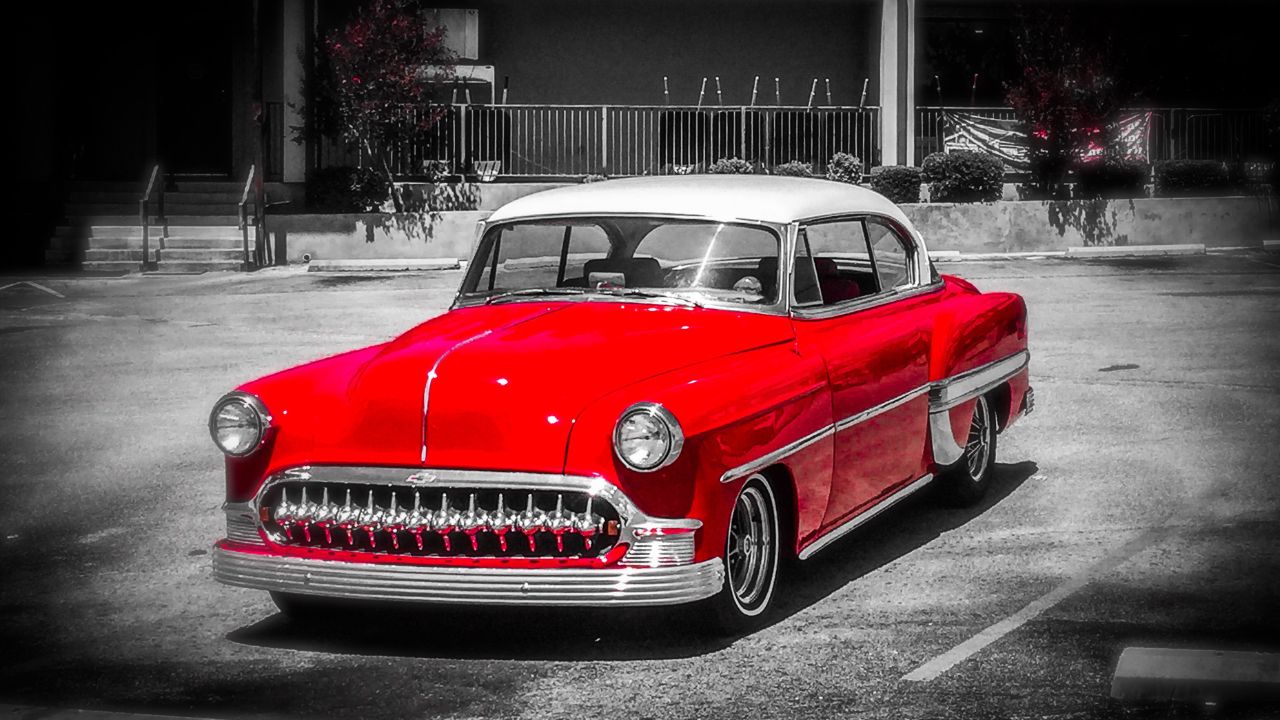
When it comes to modern muscle cars, the SRT Hellcat is the definition of what we're looking for. The Demon was the dominant force for a while. But that is about to change. The SRT Hellcat Redeye, a monster at 16 feet and weighing in around 4,400lbs with 797 horsepower, is a massive car. The SRT Hellcat Redeye could be your next muscle car.
Shelby GT500
The 2020 Mustang Shelby GT500 features one of the most aggressively-designed muscle cars ever made. The MagneRide electronically controlled adaptive suspension makes it a fast car on the track. However, it is very easy to drive on public roads. This means the muscle car can go at any speed on any public road. For more information, read our Shelby GT500 review. The GT500's engine, transmission and other options can be found here.
Corvette Z06
While the Corvette Z06 might be more expensive than PS100,000.00 in the United Kingdom it is expected to sell much cheaper overseas. Although the Corvette Z06 will cost half of the Porsche 911 GT3's, it is likely to sell for significantly more than the latter. The Corvette is the best muscle car 2020, regardless of its price tag.

Dodge Challenger SRT Hellcat Widebody
The SRT Hellcat Widebody Dodge Challenger can be your best choice. The Hellcat Widebody has a wider fender flare and 11-inch tires, making it more aerodynamic that its narrower cousins. While the wider tires mean more grip, the extra width also means less maneuverability in the public realm and parking lots.
Ford Mustang
The 2020 Ford Mustang is a muscle car that delivers class-leading acceleration and horsepower. The exterior includes vintage elements like hood stripes and is accented with modern features like SYNC 3 with 4G Wi-Fi. It is also equipped with a Ford Safe and Smart Package to reduce the risk of accidents. This Mustang features a Bang & Olufsen's sound system. Also, it is available in Twister Orange or Rapid Red and Kona Blue.
Cadillac CT5-V
The Cadillac CT5V Blackwing muscle car is built from the 6.2L Blackwing V-8 motor taken from the CT6V performance model. This mighty engine has 668 horsepower and 659 lb-ft of torque. It is backed up by a 10-speed auto transmission, as well as a 6-speed manual with no-liftshift and automatic rev-matching. The engine is connected to the car’s traction system, a rear camera and adaptive suspension.
Nissan GT-R
The 2020 Nissan GT-R, a muscle car that delivers high-performance performance, features a 3.8-liter V6 and a six-speed automatic gearbox. The Nissan GT-R is a legendary brand with a history of producing some the most prized sports cars in history. Other notable features of the GT-R include a spoiler and red pull handles, a galvanized steel-aluminum-composite body, and leather upholstery. It's ideal for cruising along the streets thanks to its interior featuring a Recaro sports seat insert and carbon fiber console insert.

Tesla Model S
The Tesla Model S electric car can outrun all supercars. It can carry 63.3 cubic yards of cargo with its dual electric motors. Although it's not perfect, it's a great preview of the future for fast cars. The Model S will be the best muscle car of 2020. You don't have to wait any longer! Start your search today! For an electric vehicle that is going to revolutionize the world, be sure to check the Tesla Model S.
FAQ
What is the difference between an automotive technician and a mechanic?
These two jobs are very similar but not identical. A mechanic repairs cars while an automotive technician does maintenance on them.
A mechanic needs to be able and quick to use their manual dexterity. A mechanic must be able diagnose and fix problems quickly and accurately.
An automotive technician requires more technical skills than a mechanic. They must be able to read blueprints and use tools such as drills and wrenches.
They must also be able perform complex procedures safely. They must also be familiar with different types of engines and electrical systems.
They must also be capable of understanding how parts interact.
This means that mechanics usually make less money than automotive technicians. However, both careers offer great opportunities.
What qualifications do I need to become a mechanic?
To become a technician, you will need to pass a series exams. These include:
-
A general knowledge exam
-
Practical exam
-
An apprenticeship test
These tests are designed for you to understand the basic concepts and principles of mechanics before your start as a technician.
These tests will allow you to be a mechanic once you have passed them. An apprenticeship is still required. This will involve training in your trade.
To learn all you can about vehicle repair, you will need to take classes and workshops. You'll also have to work alongside experienced mechanics.
For mechanic success, you'll need to be focused and meticulous. You'll need to pay close attention to every aspect of vehicle repairs.
To be a successful mechanic, you will need patience and perseverance. This may not be the career path that you want if you aren't able to follow directions.
But if you love cars and enjoy fixing them, you could be very happy in this line of work.
How long does an apprenticeship in automotive mechanics last?
The apprenticeship to become an automotive mechanic takes about three years. It includes two years of school and two years as an apprentice. The first year is dedicated to learning the theory and practical skills of the trade. You'll also learn the safe and efficient use of tools during this first year. After the completion of the first year, you will spend another year on the job training. Here you'll gain valuable experience in different trades. You will have the opportunity for formal training during these years.
The final year of the program is spent gaining qualifications and becoming certified in the field. These include NVQs or National Vocational Qualifications. These are earned after passing exams that cover specific topics in the industry. There are also HNCs (Higher National Certificates), which cover general subjects like management, business administration, customer service, and more. City & Guilds certificates offer qualifications in certain trades.
Does it matter what college I go to?
It's not true. There's no difference between colleges regarding getting into the automotive industry. There are some schools that offer more specific programs than others.
Statistics
- The U.S. Bureau of Labor Statistics (BLS) reports that the job outlook for automotive service technicians and mechanics is expected to decline by 4% from 2019 to 2029. (indeed.com)
- Apprentice mechanics earn significantly less hourly than mechanics who have completed training, with a median wage of approximately $14.50 an hour, according to PayScale. (jobhero.com)
- According to the BLS, the median annual salary for automotive service technicians and mechanics in the United States was $44,050 in May 2020. (uti.edu)
External Links
How To
How to correctly diagnose your vehicle for repairs
The symptoms of your vehicle are the first thing you need to look at in order to determine whether it is in dire need of repairs. Follow these steps to properly diagnose your vehicle.
-
Check engine lights. Inspect the dashboard light indicators. These include the engine lights, the oil pressure gauge and the battery light indicators. The RPM gauge and coolant temperature gauge should also be checked. If they have been flashing for more days than usual, it could be a sign that something is wrong with the vehicle.
-
Inspect the tire treads. Tires that are worn can cause issues with handling and braking. The treads of the wheels should be inspected as well. They should be smooth and clean. The best way to do this is to remove the wheels and take them off. A flashlight can be used to check how worn the treads are.
-
You should always monitor the level brake fluid. Keep track of the brake fluid level in your vehicle. This will ensure that your brakes run smoothly. Low brake fluid levels can cause brake failure when you apply pressure.
-
You should test the suspension system. A suspension system is designed to absorb vibrations and shocks. It allows for better control, smooth acceleration, and deceleration. A suspension problem can cause your vehicle to feel wobbly and shake uncontrollably. If you are unsure if your vehicle is suffering from a suspension problem, put weight on the front and rear axles to check the movement.
-
Examine the steering wheel. The steering column is used to link the steering wheel with the rest of vehicle's components. Steering columns can be damaged by accidents. If yours feels loose or shaky, you should replace it.
-
Observe the exhaust pipe. Exhaust pipes move gases from combustion chamber to atmosphere. If the exhaust pipe is damaged or leaks, harmful fumes can enter your cabin. It is also important to repair any bends in your tailpipe immediately.
-
Look under your hood. To check for unusualities, look under the hood. There could be fluid leaking from your engine. Also, professional technicians should be called if you detect an unusual smell coming out of your engine compartment.
-
Make sure to check the air filter. The outside environment can collect dust and other debris in your vehicle's air filters. A dirty filter can lead to a poor vehicle's performance. Replace your air filter regularly.
-
Verify the fan belt. The fan belt that connects your vehicle to the transmission is called the engine fan belt. The engine will not turn if the fan belt breaks. It's easy to replace the belt. You only need a screwdriver or pliers to replace your belt.
-
Make sure you inspect the radiator hoses and hoses. The radiator-hose carries water to the engine. It can cause hot liquid to leak onto the engine if it is damaged or cracked. The hose can be repaired with a pair or needle-nosepliers, and a wire brush.
-
You should inspect the windshield wipers. Windshield wipers use electricity to wipe away rain and snow. If they stop working, streaks could be left on your glass. You can fix the problem by changing the washer fluid.
-
You should inspect the cables. The battery cables supply power to your car's electrical systems. Before you change batteries, disconnect the positive cable. Failure to do so can damage your alternator.
-
Pay attention to your headlights. The headlights will illuminate the road ahead. If they don't work properly, it can cause poor visibility. To determine if your bulbs are out of date, check them.
-
Always check your lights. When you approach them at night, the lights warn other drivers. You could be distracted and cause an accident if one does not work.
-
Check your brakes. Brakes slow down your vehicle before a collision. If they aren't working correctly, you could lose control of your car and crash.
-
Make sure to change the oil. The oil keeps your engine well lubricated. It helps prevent metal parts from wearing out too quickly. It is recommended to change the oil once a month.